There is something special about the first days of summer here where I live, on the Istra peninsula, northern Adriatic, in Croatia. The springtime explosion of life is still going on, but the days are really hot, some flowers are turning into seed pods, some plants are beginning to dry out, there is a great abundance of colors and species, the nature is full of buzzing, tweeting and all kind of discreet sounds made by various small animals.
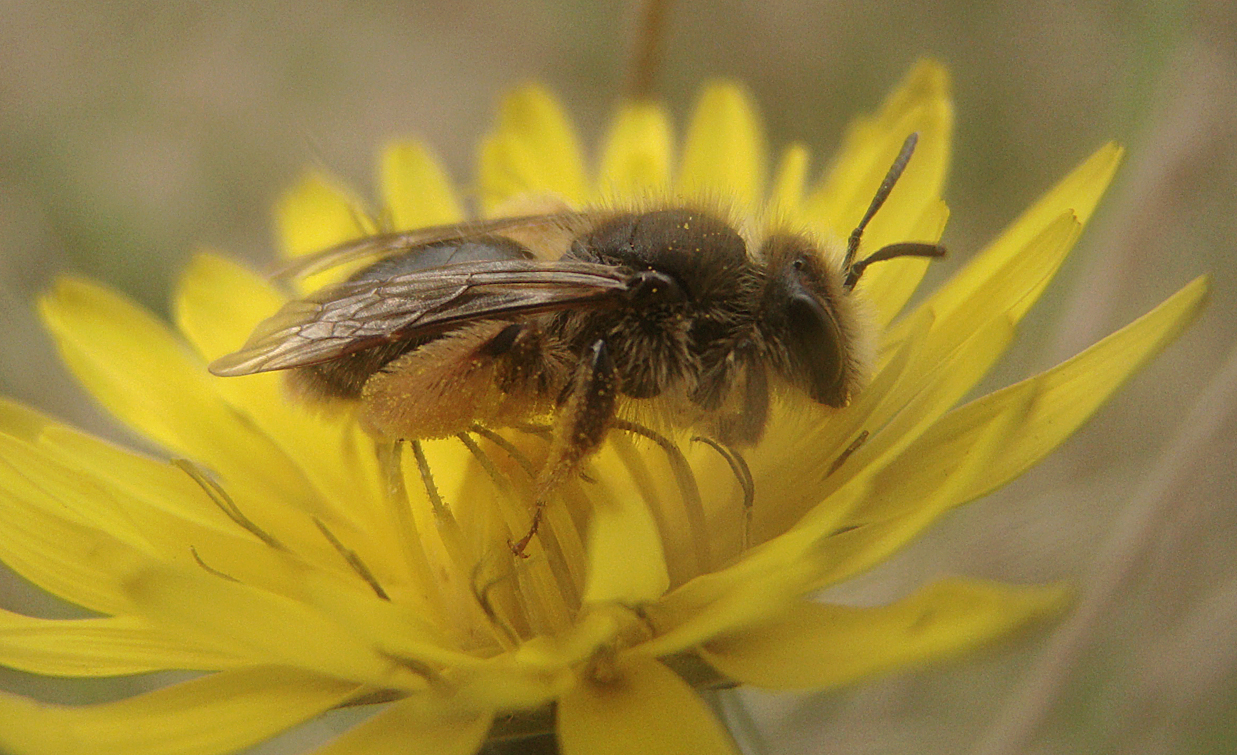
With this post I'll try, through a collection of photographs made last year during that period, to get you into this mood and atmosphere. All the shots were taken on the open coastal meadows, in the same, few hundred meters large area permeated with the nice, salty aroma of the nearby sea.

This is a morning shot of the Common European mantis (Mantis religiosa) ...
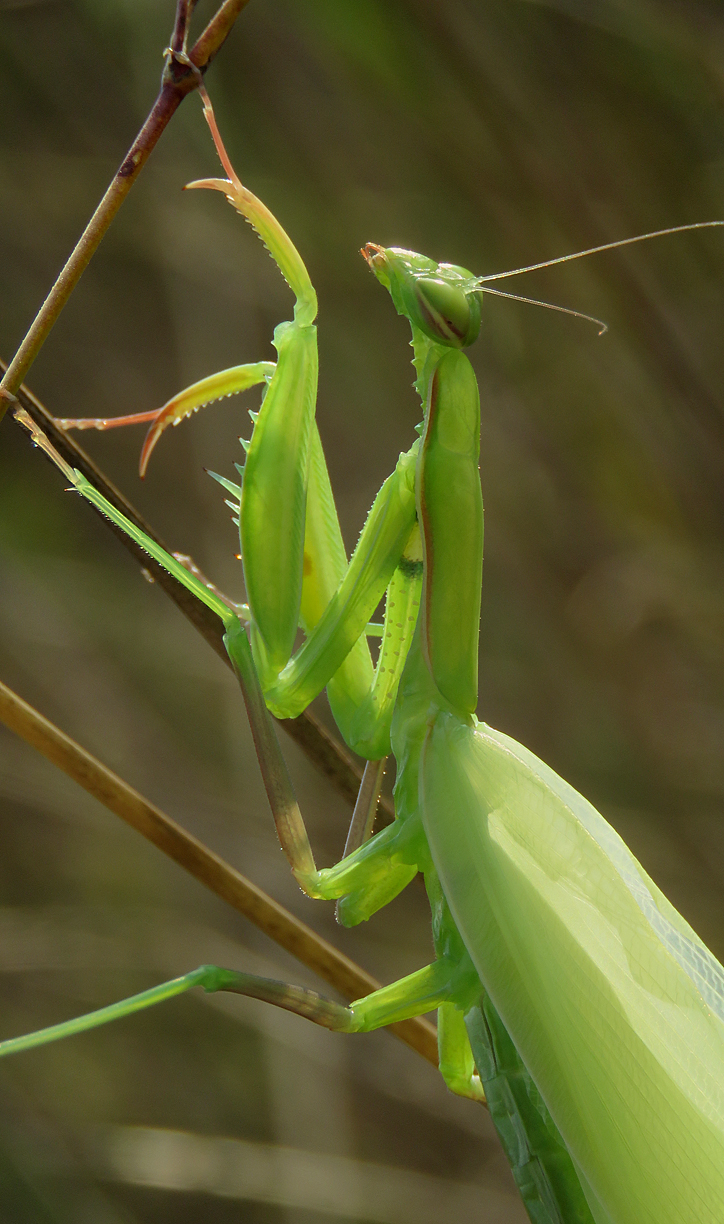
... taken not too early ... about 8 a.m. ... the sun is already pretty high...
 (Enlargeable)
(Enlargeable)
... and here ... on this wider look at the same scene ... you can see that the insect has just exited its old, too tight exoskeleton. The mantises usually do this much earlier in the morning ... or at dusk ... but this one was somehow in the middle of the operation when I arrived.

With each minute passing, her wings were larger and soon she was fully formed and ready to continue on her way through the grass in search for something to eat.
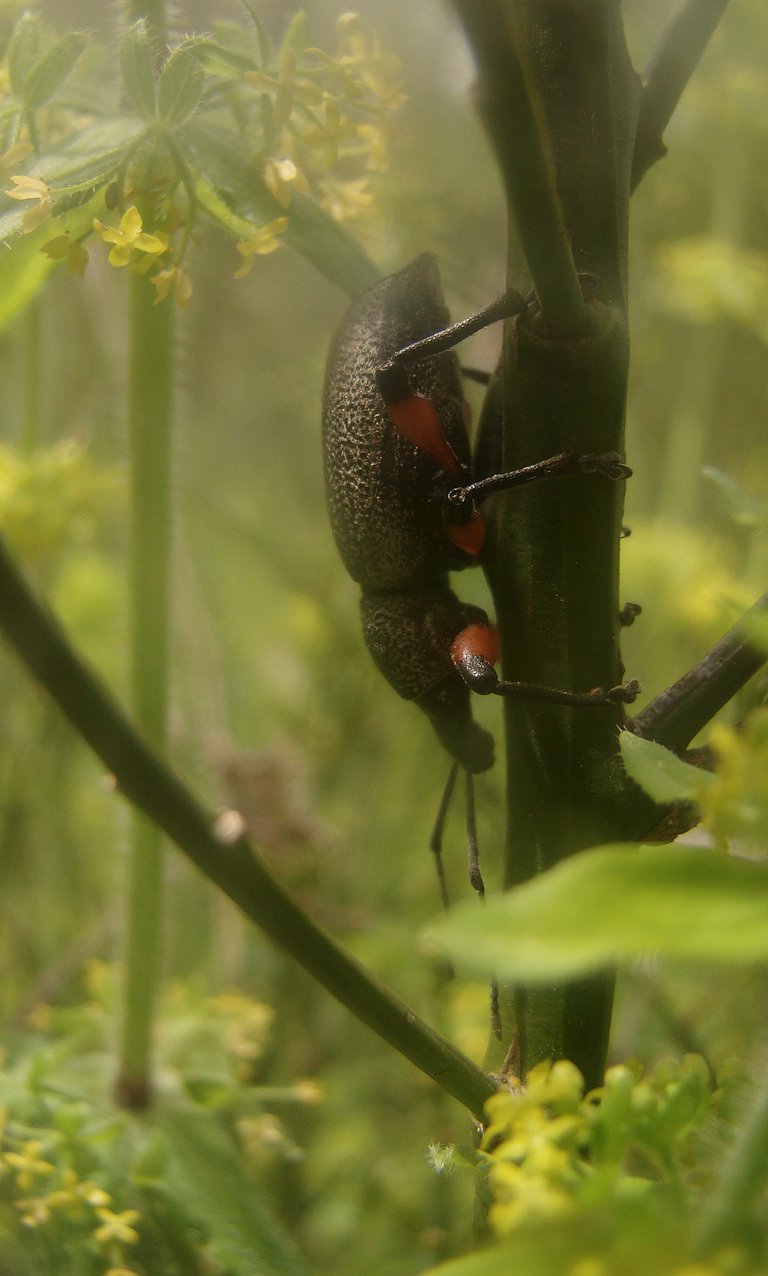 (Enlargeable)
(Enlargeable)
Meanwhile, not far from there, on the greener part of the meadow, this pretty large (the largest in this area as far as I know) Weevil of the Otiorhynchus sensitivus species is climbing down the Common chicory plant. After a long search through Internet I found only the scientific name of this insect, so this is all I can tell you to accompany this photograph.
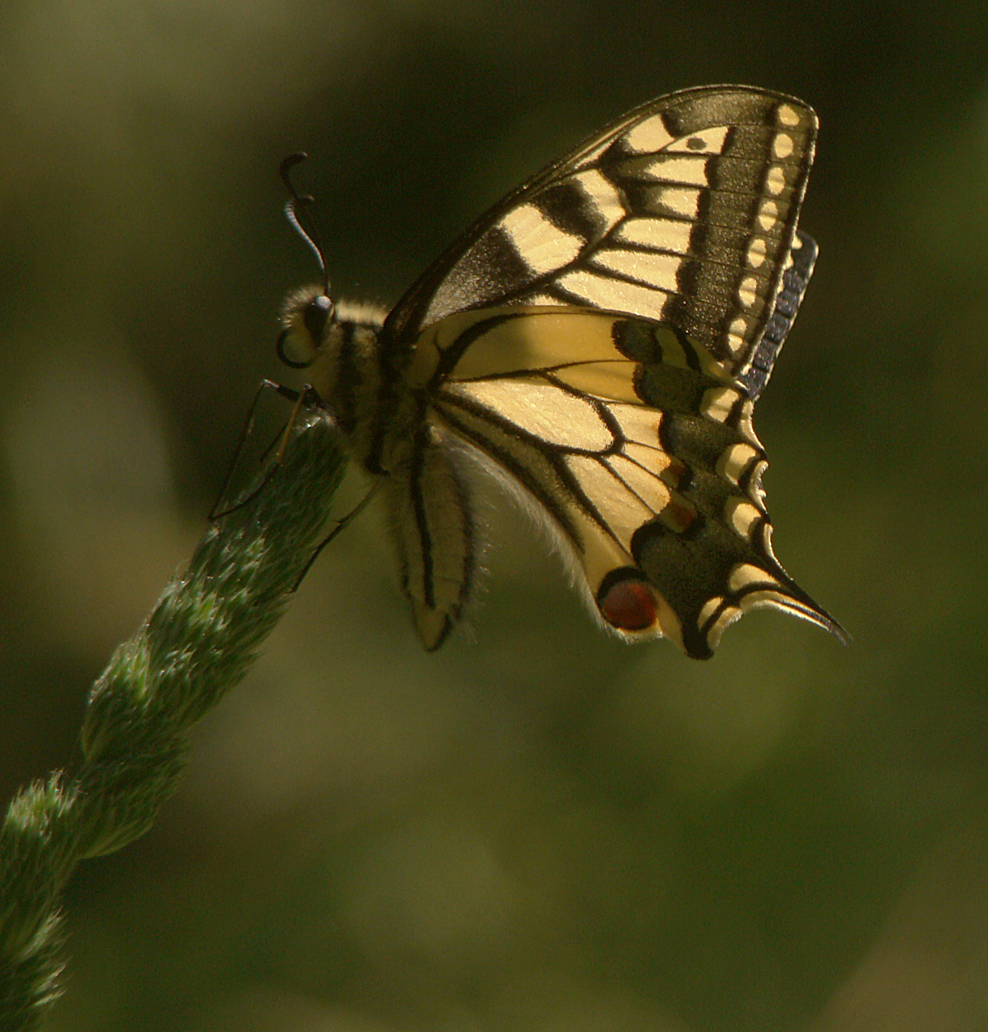
The Old World swallowtail (Papilio machaon) is a very common, but uncommonly large and beautiful butterfly ... not many butterflies in this area are this large and exuberant. Caterpillars are feeding on Wild carrot (Daucus carota) and Fennel (Foeniculum vulgare) that abound in this sunny habitat.
 (Enlargeable)
(Enlargeable)
Catterpillars are also pretty collorful and decorative ... the one on this photograph is munching the Fennel twig.

Many trumpet - like flowers of the climbing Convolvulus arvensis plant are scattered around, mixed with other vegetation ... and many insects find them very tasty and attractive. On this one you can see one of the many small moth species active during the day ... and one minuscule beetle.
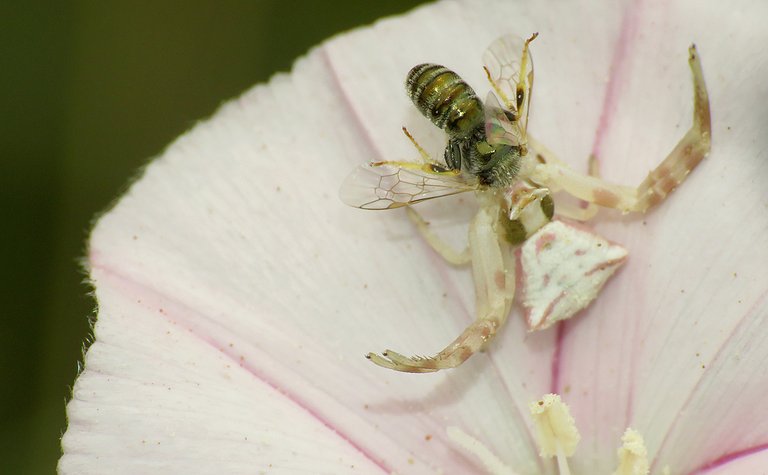
Another flower - another situation. Here the appropriately camouflaged crab spider ...
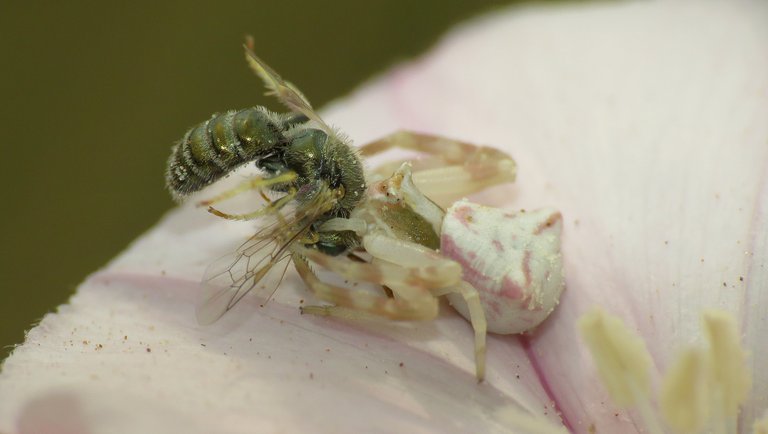 (Enlargeable)
(Enlargeable)
... has just caught ...
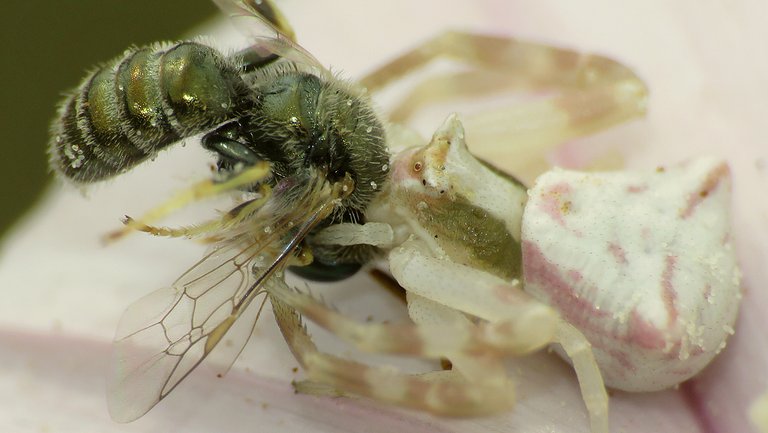
... a small shiny bee that I never saw before ... nor after ... this occasion.
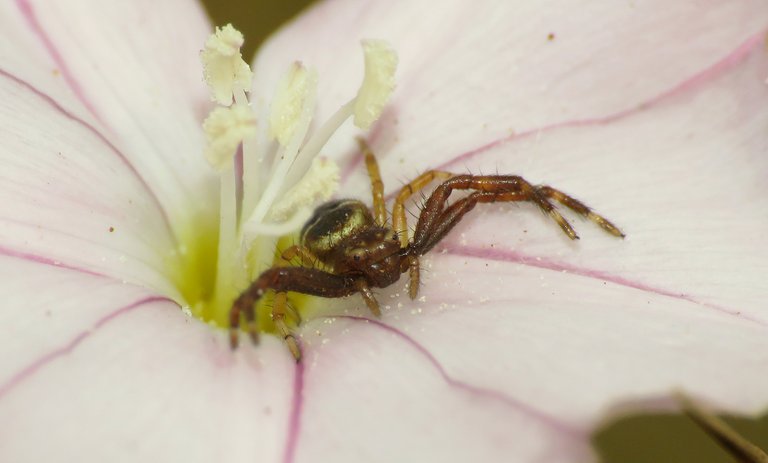 (Enlargeable)
(Enlargeable)
On this enlargeable photograph you can see a different, pretty tiny crab spider species waiting in ambush. This one doesn't look perfectly camouflaged.
 (Enlargeable)
(Enlargeable)
And here ...
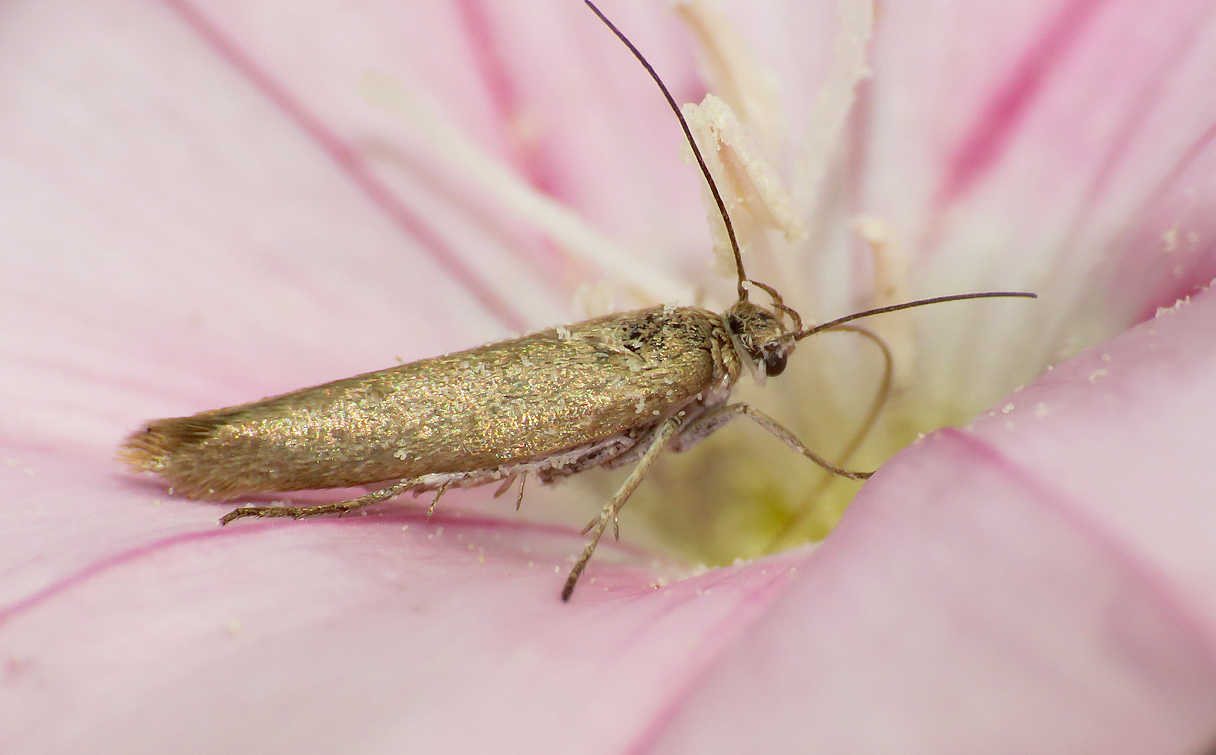
... always on the same kind of flower ...
 (Enlargeable)
(Enlargeable)
... another tiny diurnal moth ...
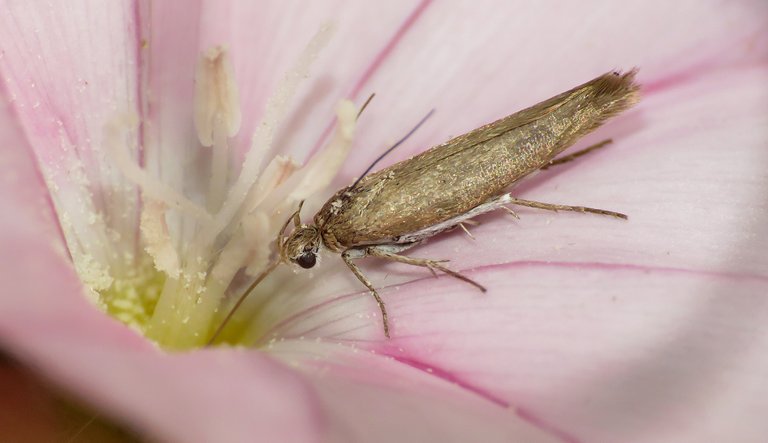
... with long proboscis ... and again, like with many of these small moths that abound on the meadows, I couldn't find the exact species. You can find many similar and confusing shapes and brown to gray colors ... and is a difficult task for a non-expert like me to be sure enough to write you the scientific name. If someone, who will read this post, knows more information and has time to share it, I'll be very grateful to read it in the comments.
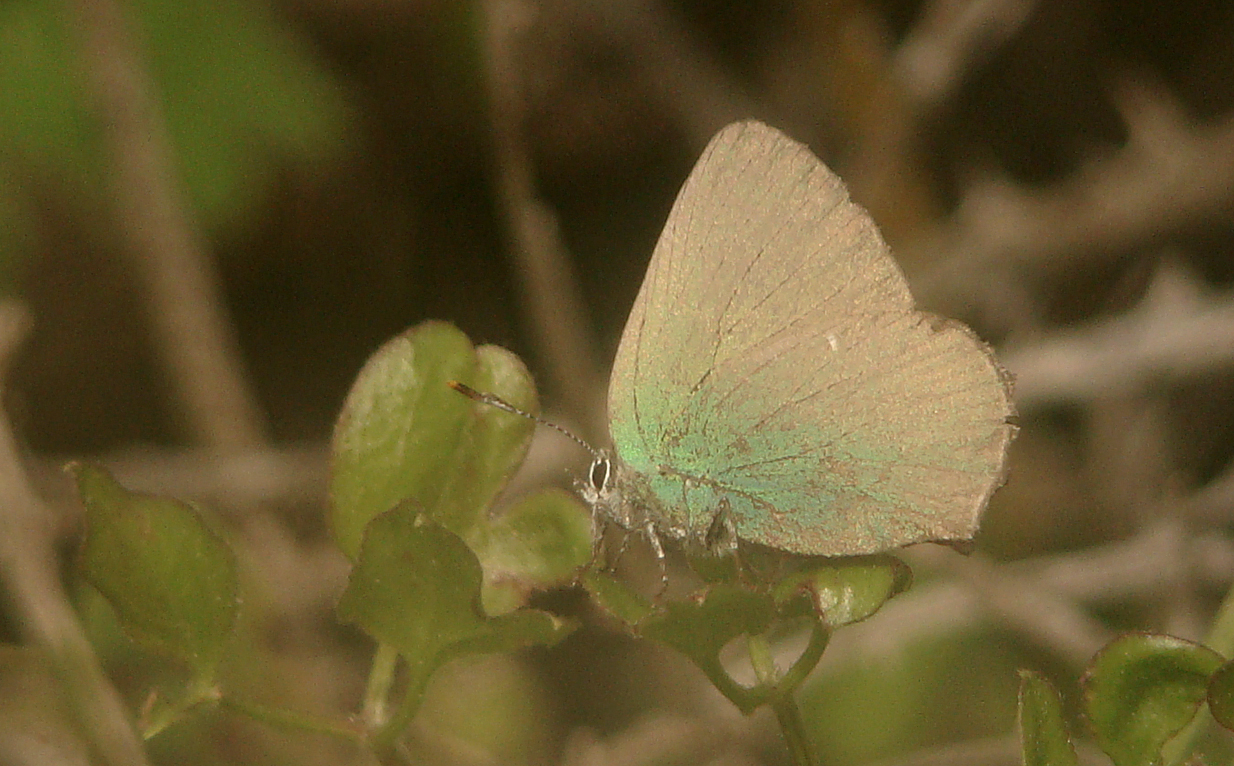
Not much bigger than those moths ... this Green Hairstreak butterfly (Callophrys rubi ) is also flying around.
They never rest with their wings open, to maintain their green ... or greenish camouflage. The males are very active and territorial, and often lose most of their shiny green scales during the aggressive flights and fights.
 (Enlargeable)
(Enlargeable)
Some surprising shapes can sometimes be found on plants. This one ad example ...
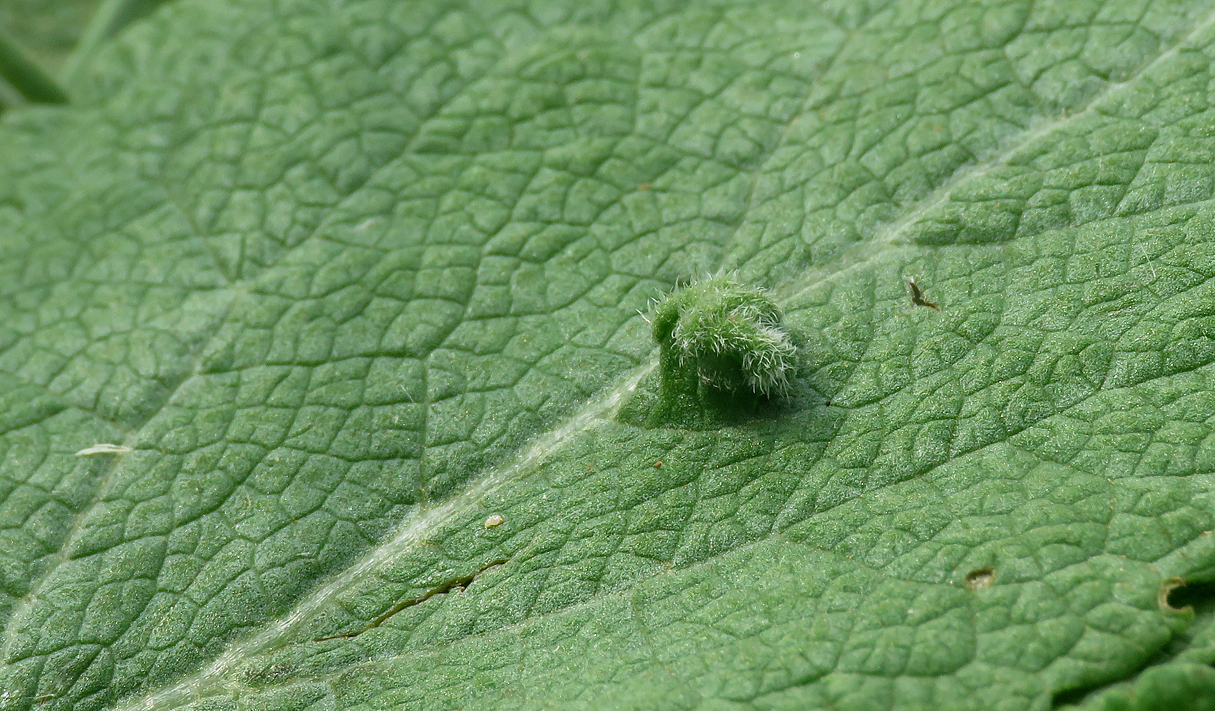
... looks like some cactus - like plant in the green landscape from some angles.
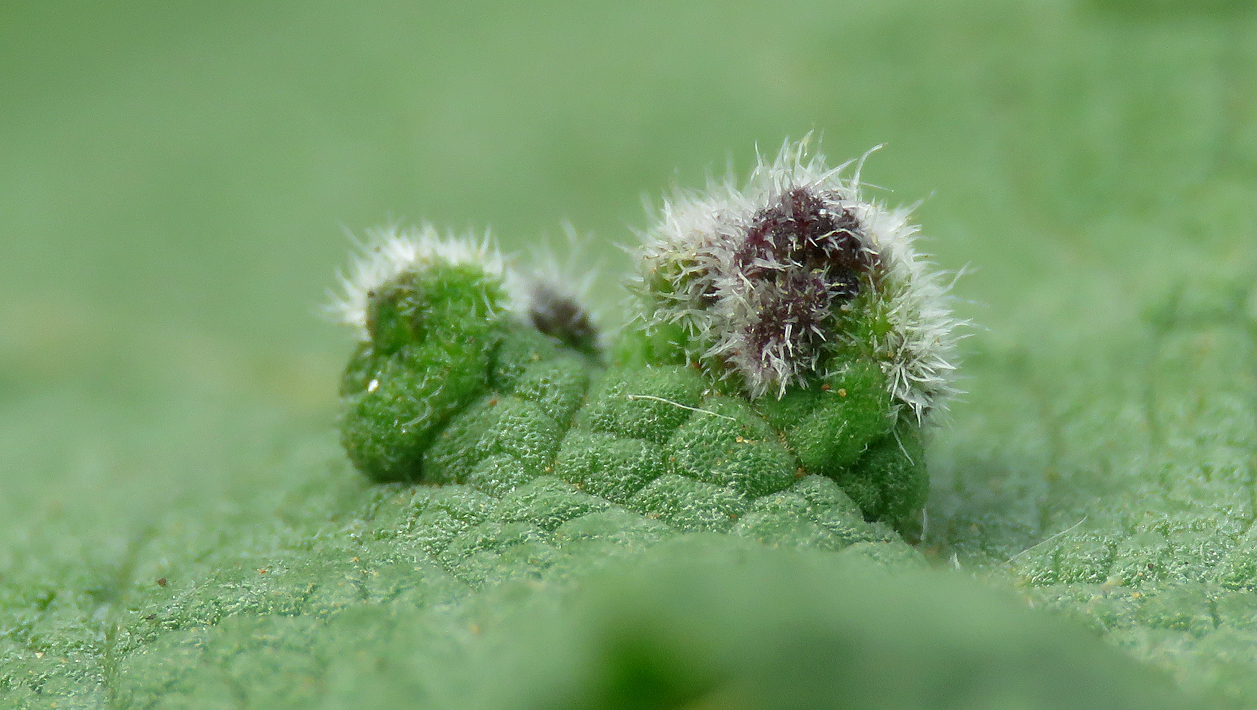
I don't know what is at the origin of these photogenic little protuberances on the large juicy leaf carpeting the ground. On this kind of surfaces ...
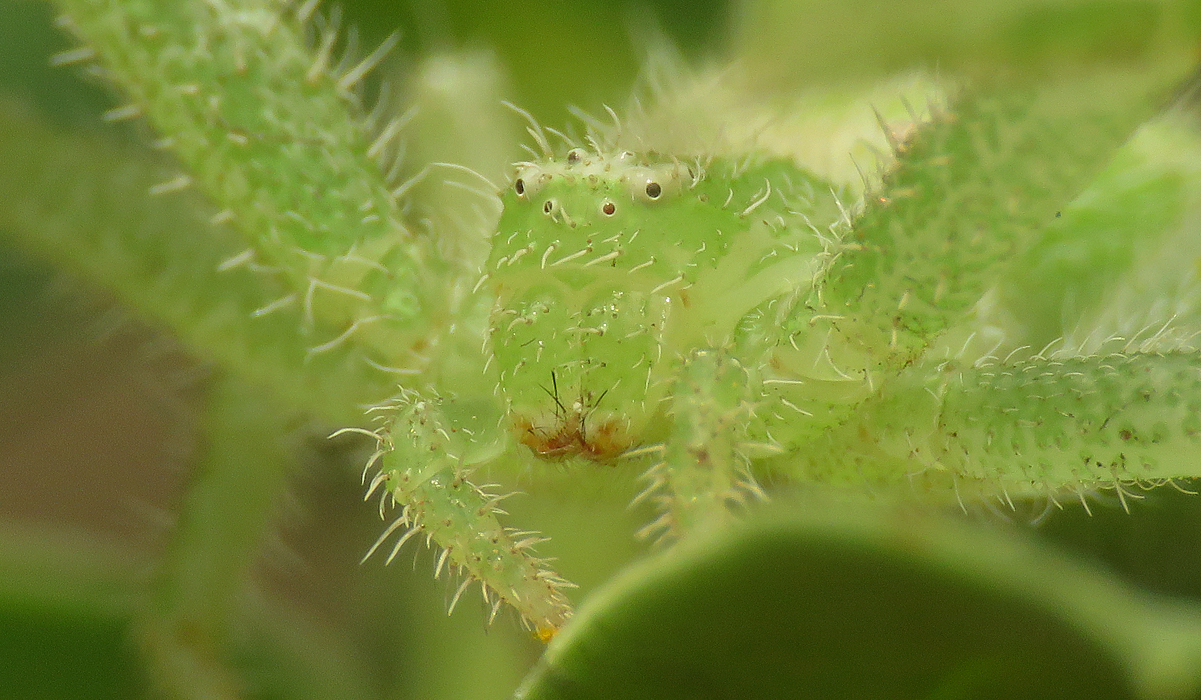
... you can often find …
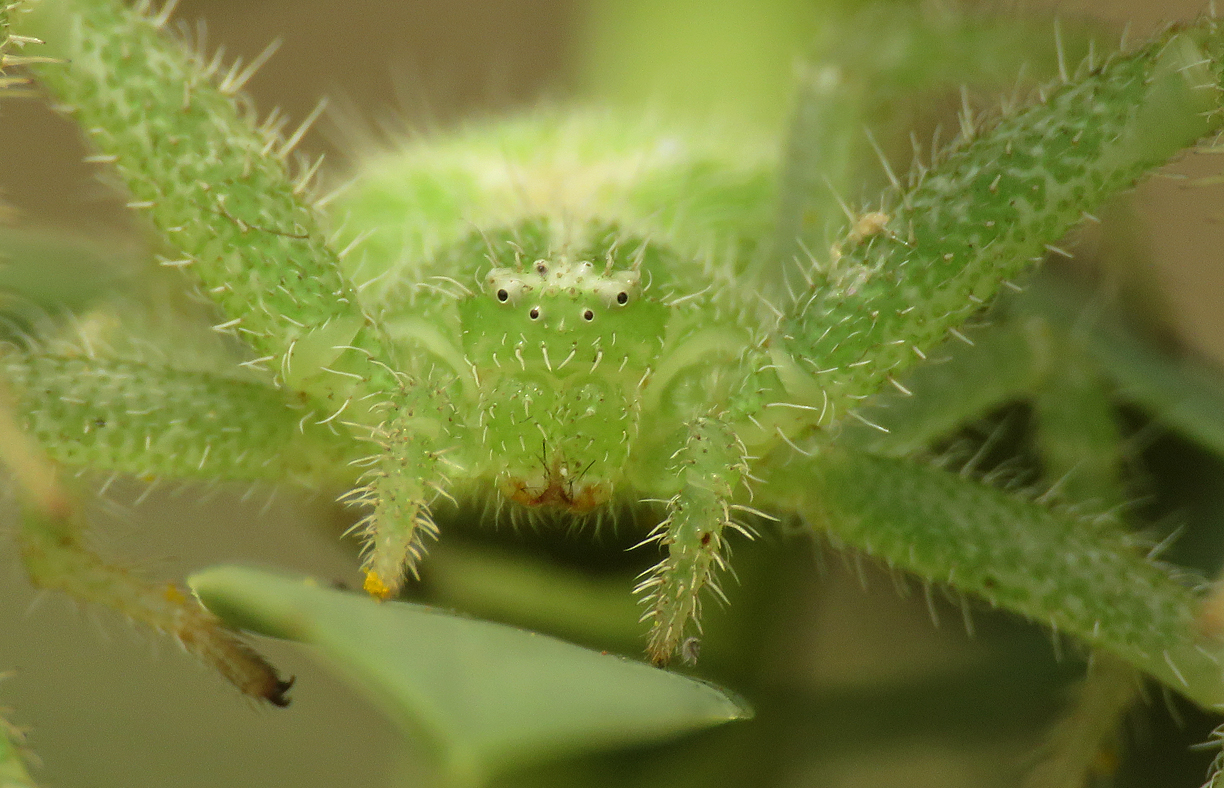
... this interesting species ... with great camouflage ... another crab spider ... and this time for a change :) I know the exact species, this is the pretty unique Heriaeus hirtus.
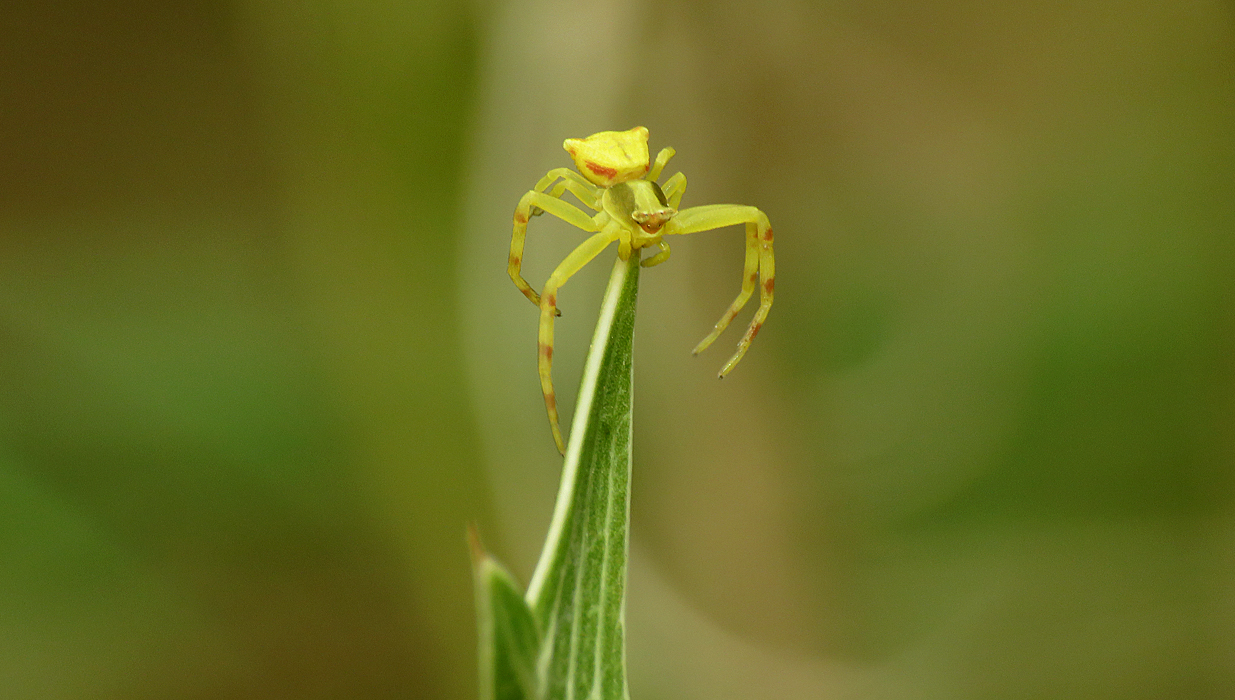
And since we are talking about crab spiders again ... here at the top of the torn on the Scolymus hispanicus plant ...
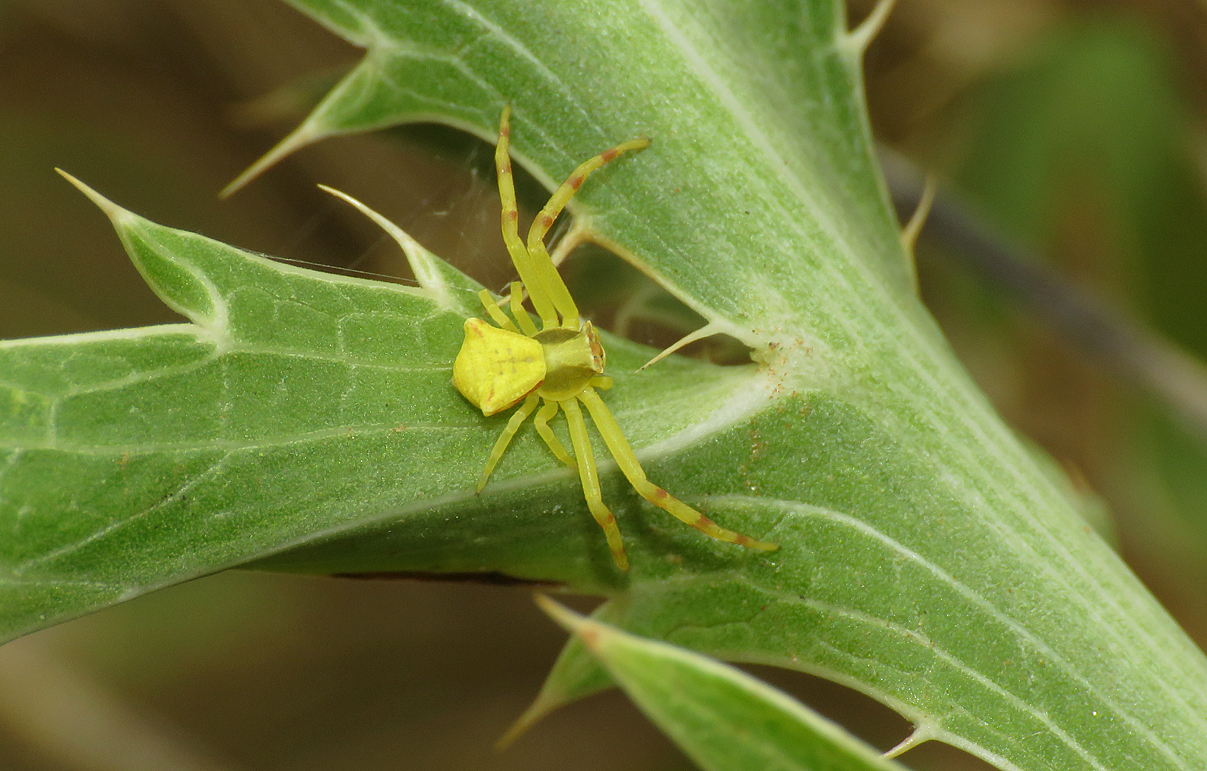
... is another colorful version ... in some species colors may vary from individual to individual, making the determination even more confusing to me... and in general, I suppose.
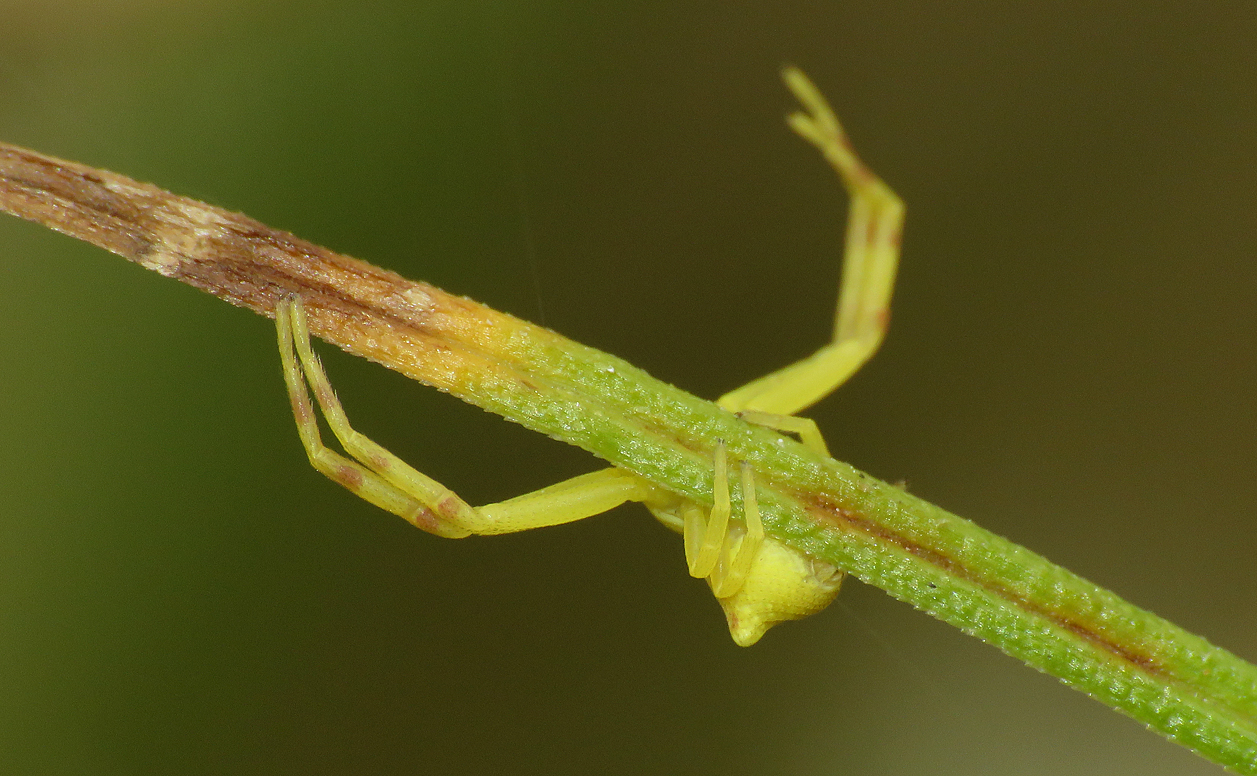
It's a bit tricky to get a good shot of these spiders, because they tend to hide underneath every thorn, stem or leaf available. As always in this kind of photography - patience is the key. If you hang around them long enough they will eventually get used to the photographer presence ... or just tired ... and accept the situation.
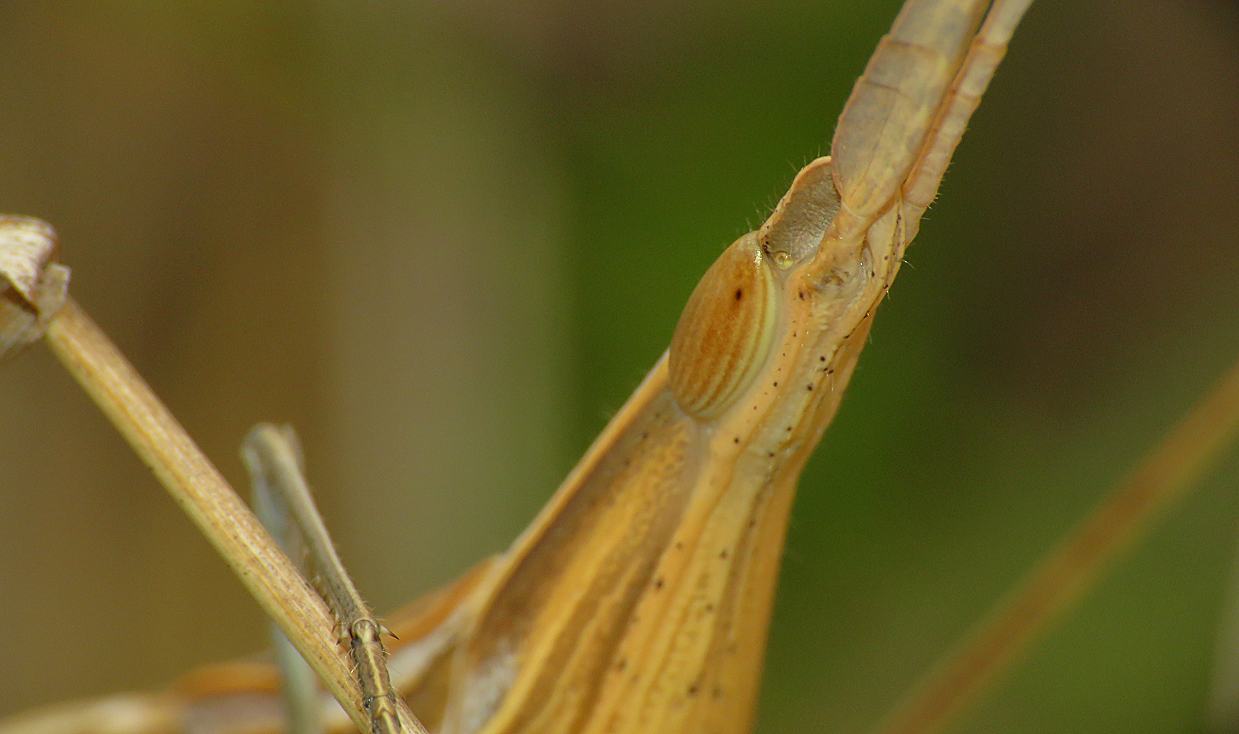
This mysterious thing ... is just an eye and part of the head ...

... on the Mediterranean slant-faced grasshopper (Acrida ungarica mediterranea) ... another well camouflaged inhabitant of these coastal meadows.
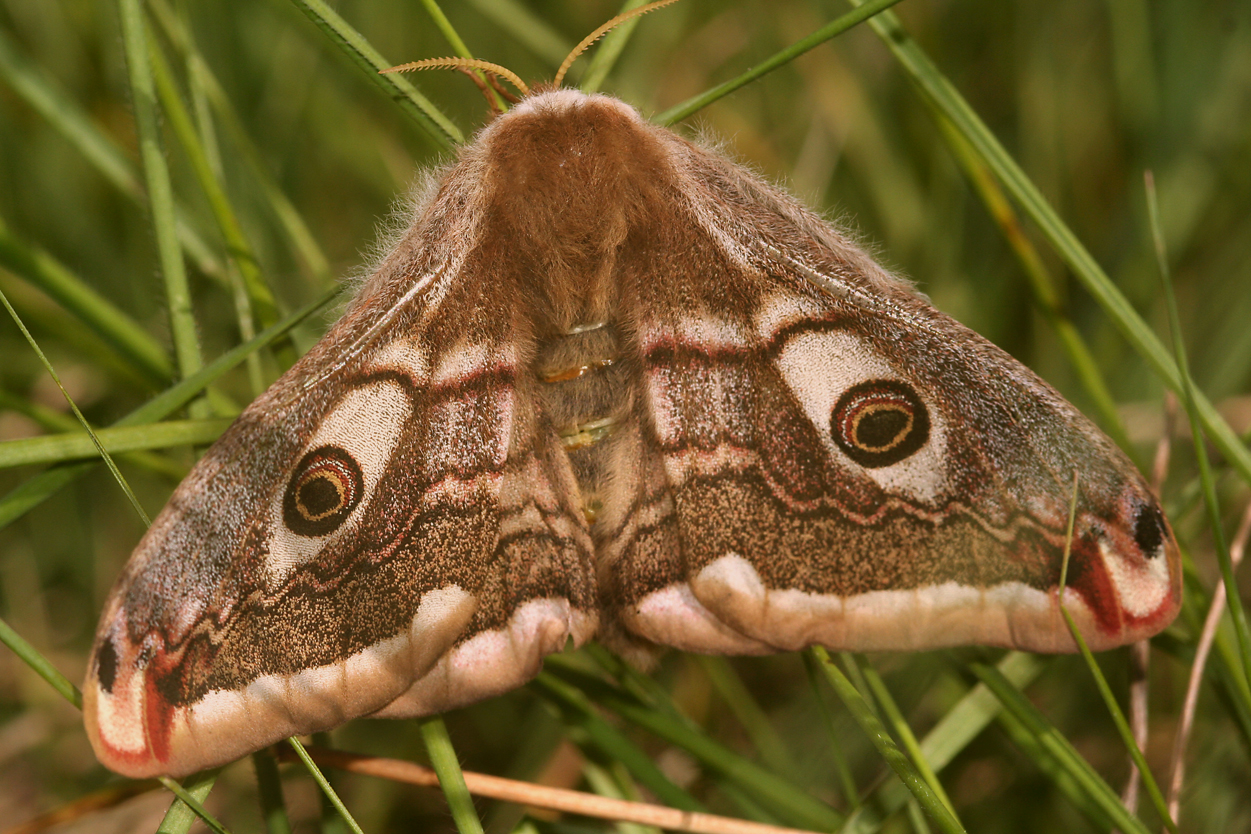
Although they are nocturnal ... these large, colorful ... and ...

... very fluffy teddy - bear moths ... he, he ... I mean, that's not their real name, that's how I call them when I'm slightly exhausted, in the midst of a bit longer post that requires some searching on the Internet ... this is actually the Small emperor moth (Saturnia pavonia) and isn't small at all. Is one of the largest moth here where I live ... and as you can see on these photographs ...
 (Enlargeable)
(Enlargeable)
... is also a very beautiful one ... but that isn't important now ... what I wanted to say is this - Although they are nocturnal, these large, colorful moths, can sometimes be found resting somewhere in the tall grass during the day.

After all these spiders and moths, I decided to present you this beetle. I didn't find out what species is this. All I can tell you, it's that they are not very common in this area, I see them rarely in my coastal ramblings.
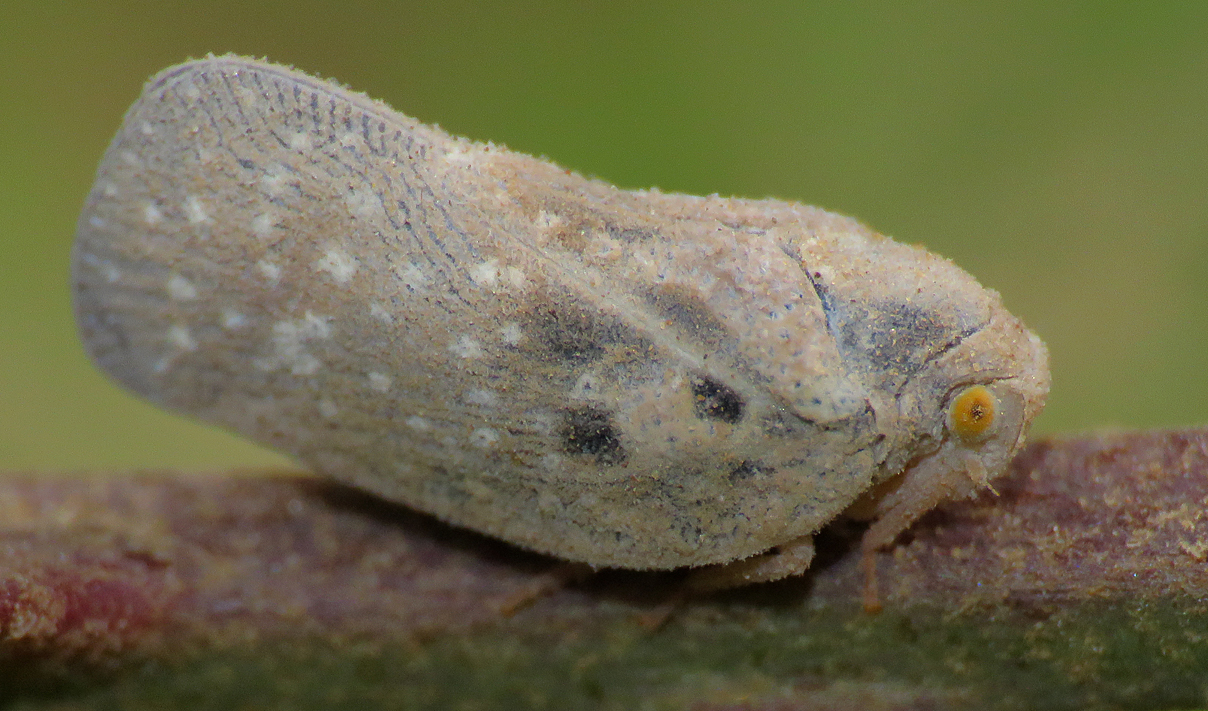
This creature ...
 (Enlargeable)
(Enlargeable)
... is a part of one of the many Froghopper species that I regularly encounter, but can't identify.
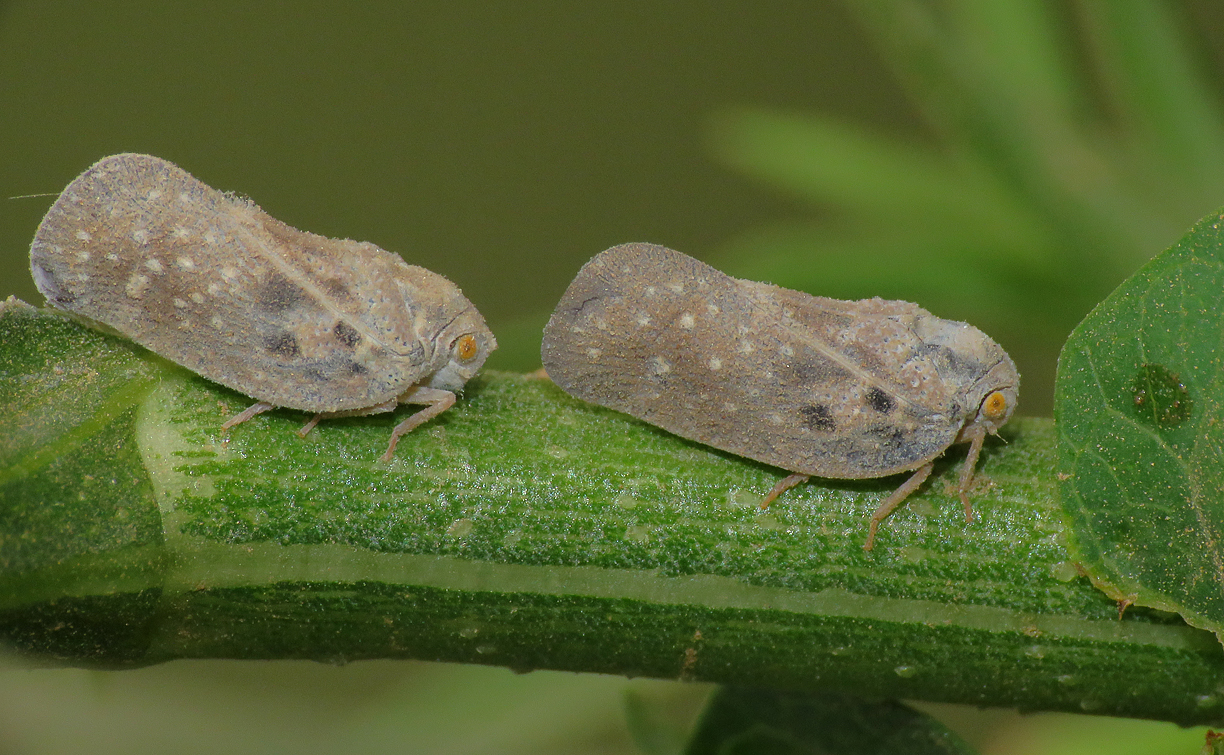
This is a very large and varied group of insects. They come in many interesting shapes and colors, often mimicking thorns and similar stuff. I noticed that this species always hangs on, and around, the blackberry shrubs. At least in this area. On the following three shots ...
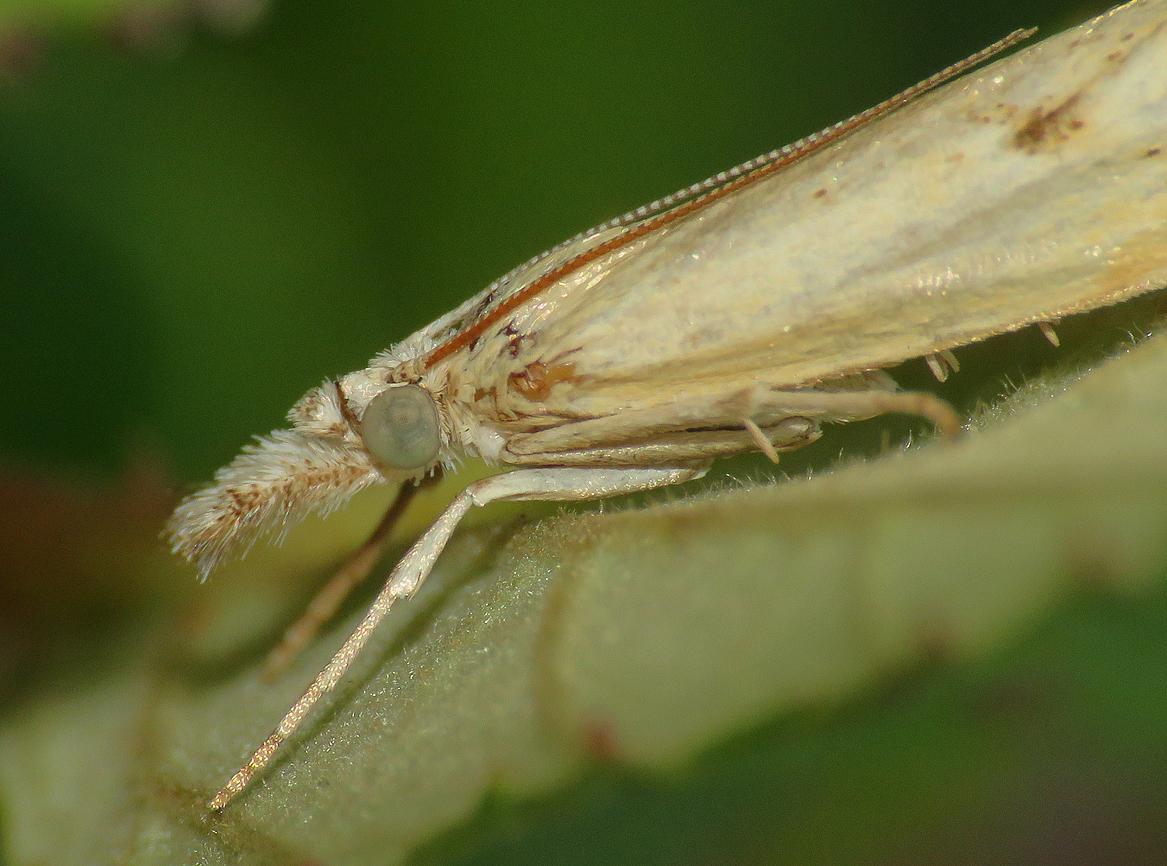
... taken also on one of the blackberry plants surrounding the meadows ...
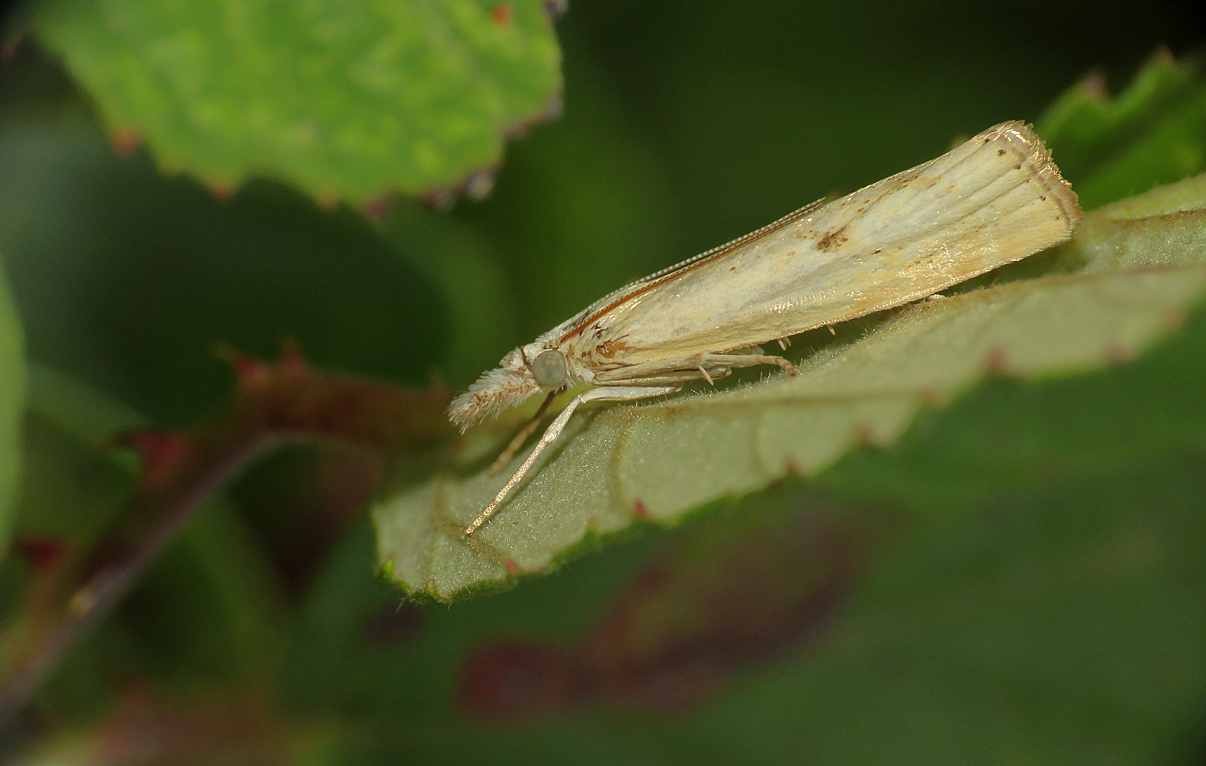
... is one example of the most common moth type of this habitat ...
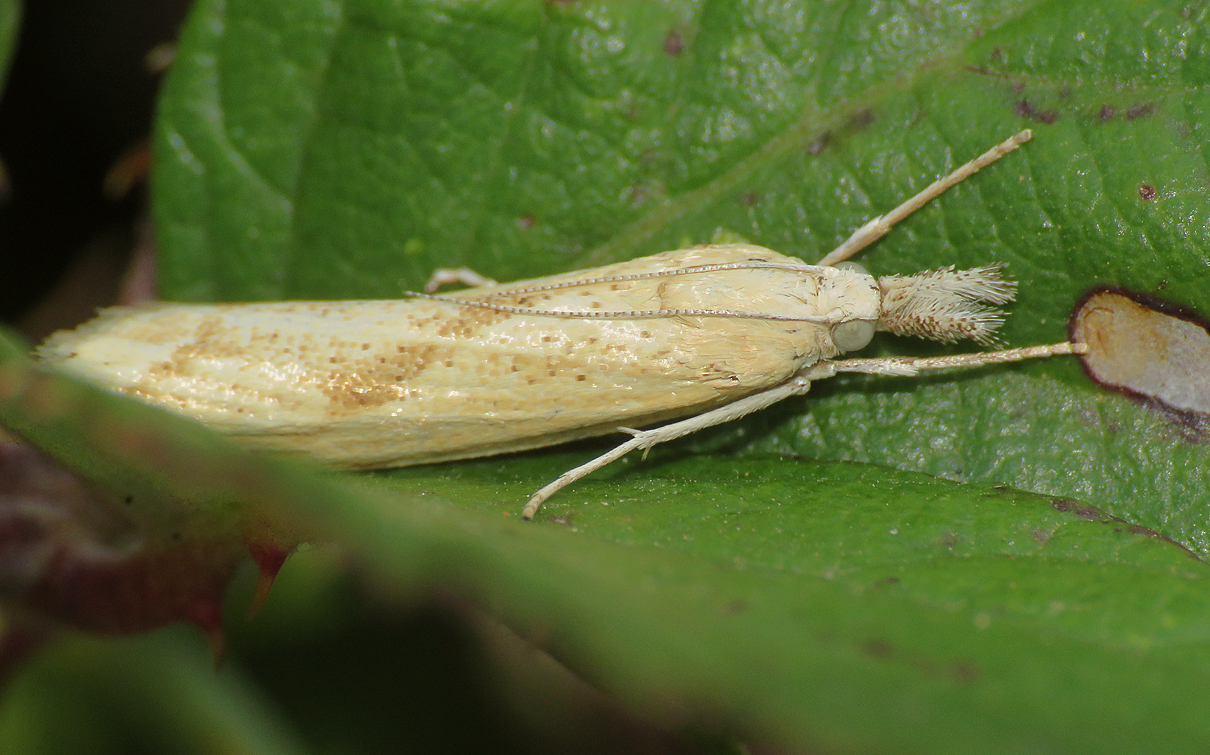
Some species from the Crambidae family ... they come in many similar shapes and colors.... but not only similar, there is a great variety here I don't know which species is this.
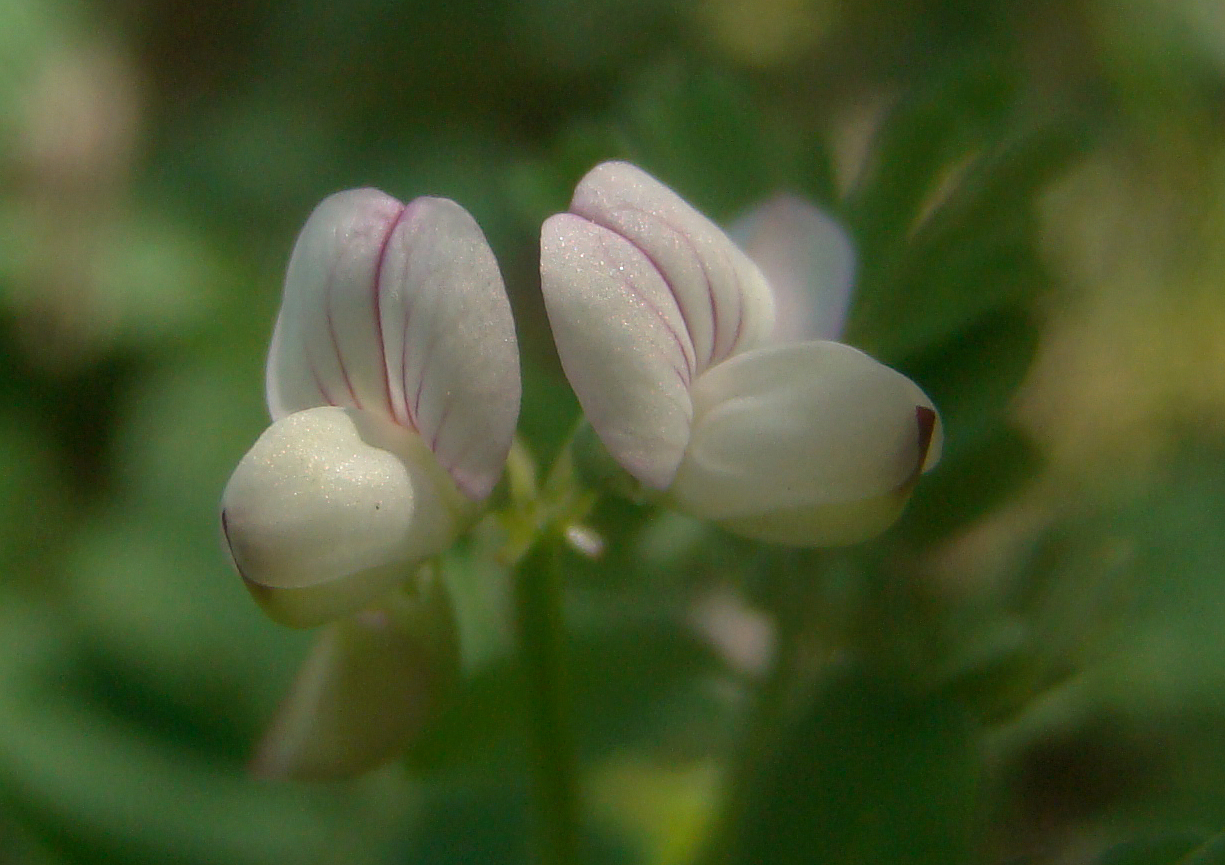
Now is time to take a short botanical break with this tiny flower ...
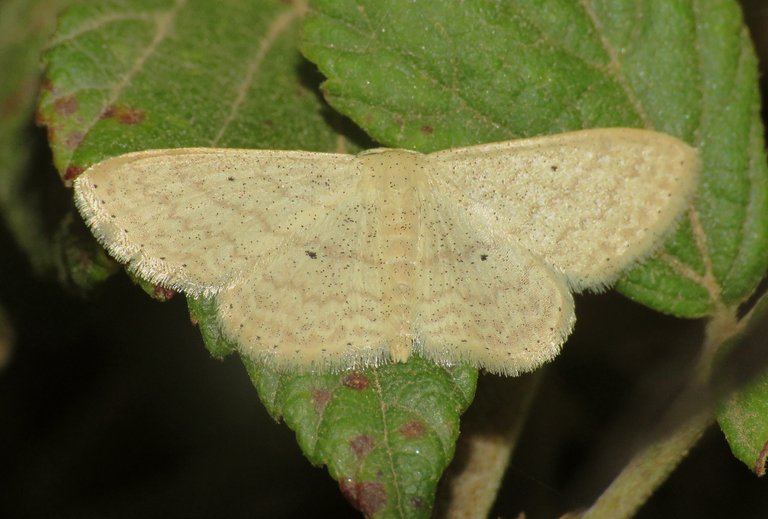 (Enlargeable)
(Enlargeable)
... then another unidentified moth species ... similar in color with the previous one ... but very differently shaped ...
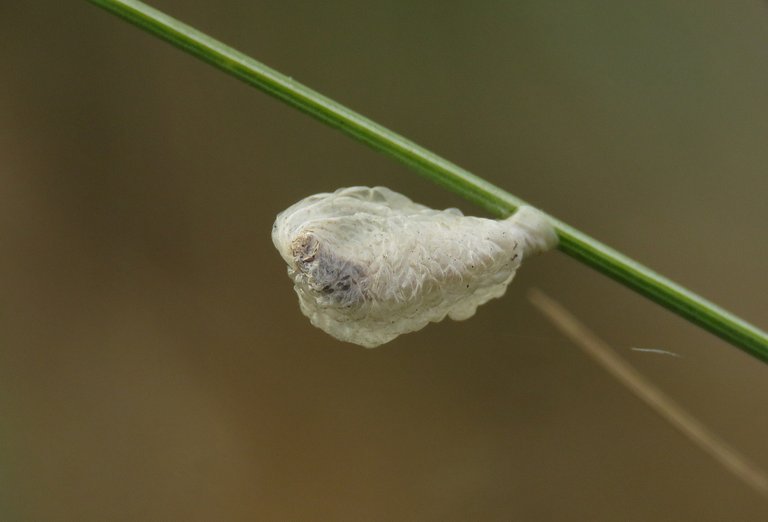 (Enlargeable)
(Enlargeable)
... followed by this moth's cocoon ... also unidentified … I mean, I'm not sure if this has anything to do with moths ... but somehow I think it has ... call it intuition or something like that.
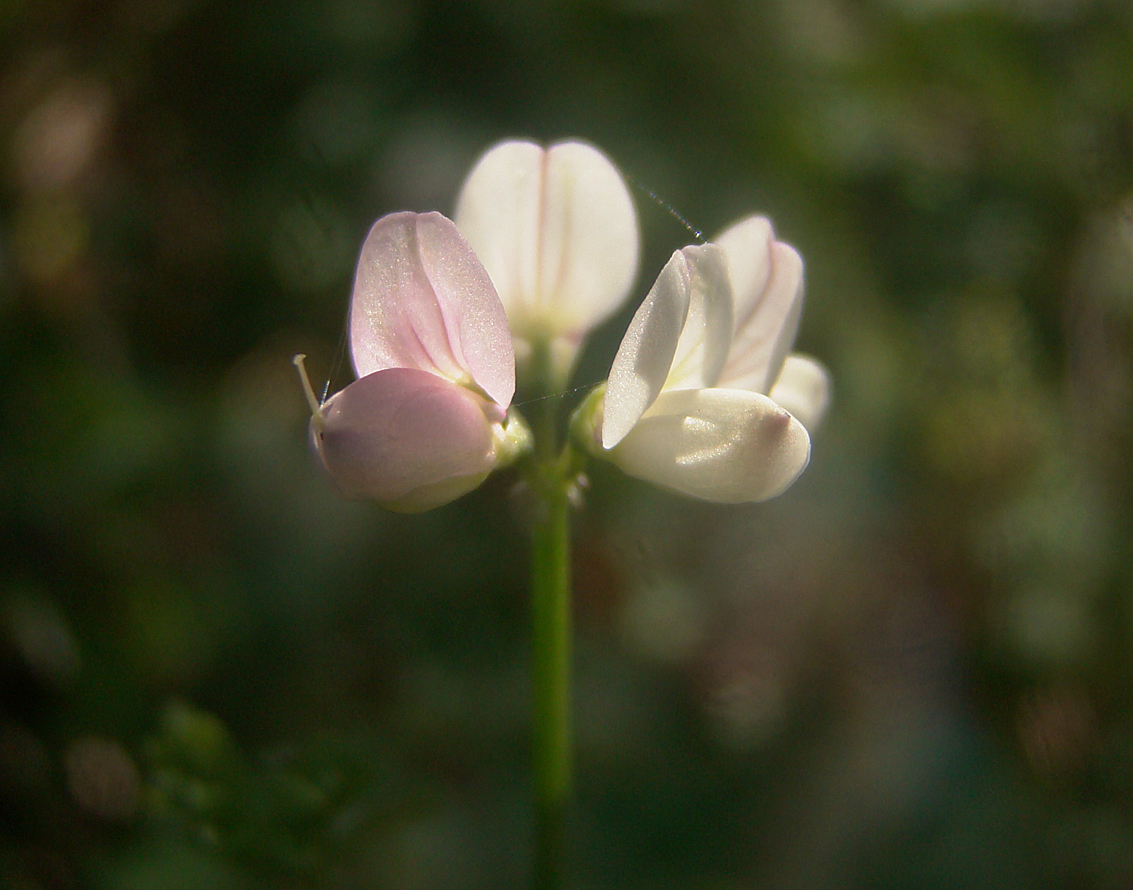
Here is another small flower ... to change the scenery a bit.
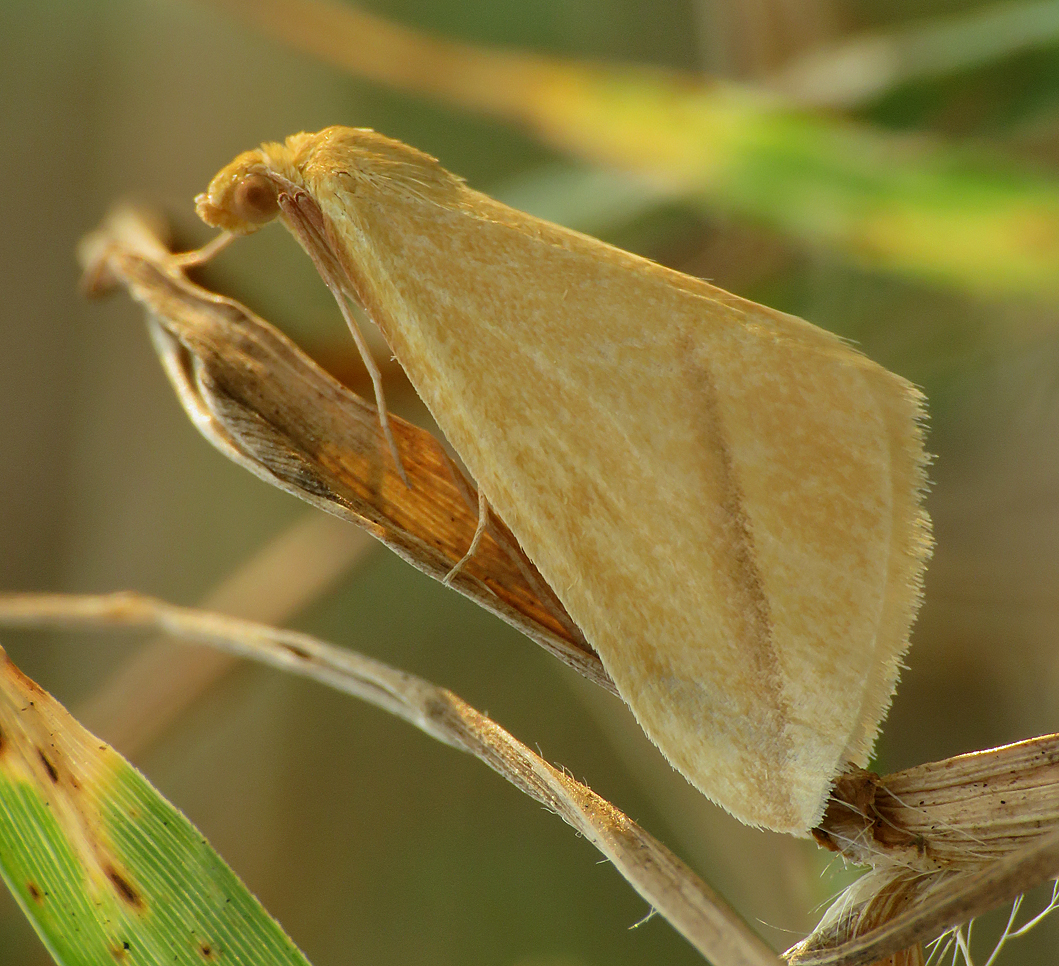
Then another moth ... Rhodometra sacraria. Another small one.
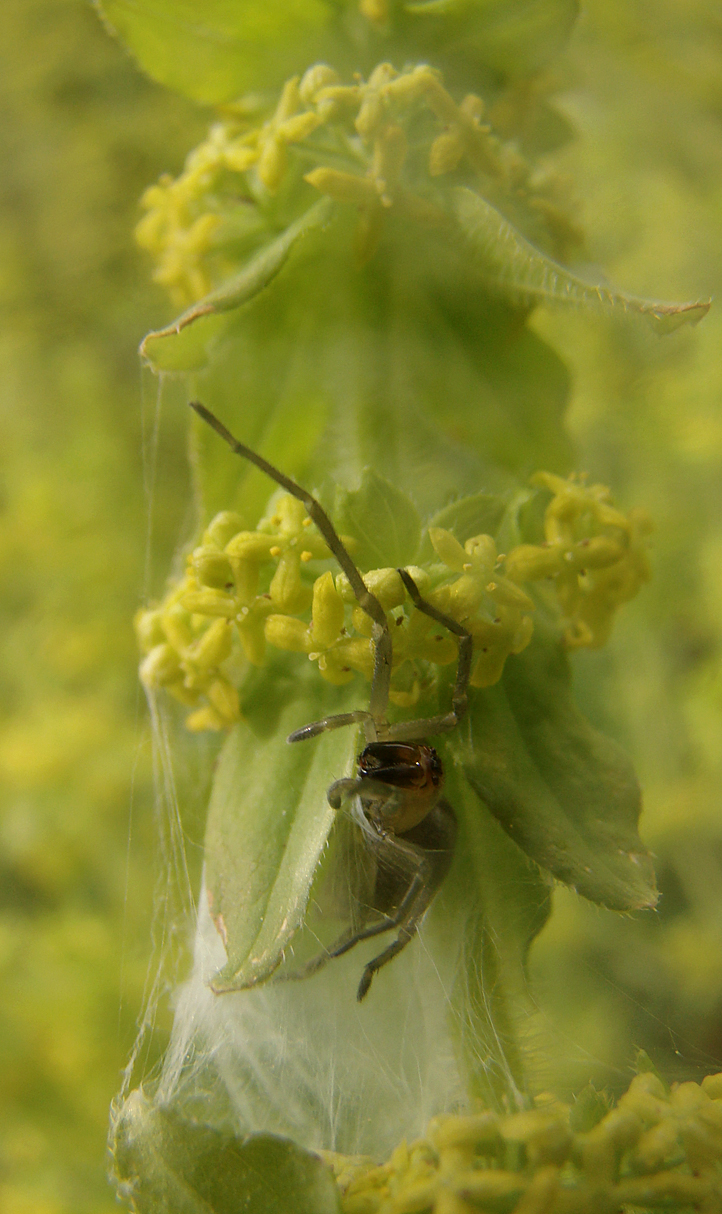
On this photograph, you can take a look at one of the Cheiracanthium spiders species, peeking from its silky den among some tiny flowers ... and on the following picture ...

... some small wasps are mating on the dandelion flower.
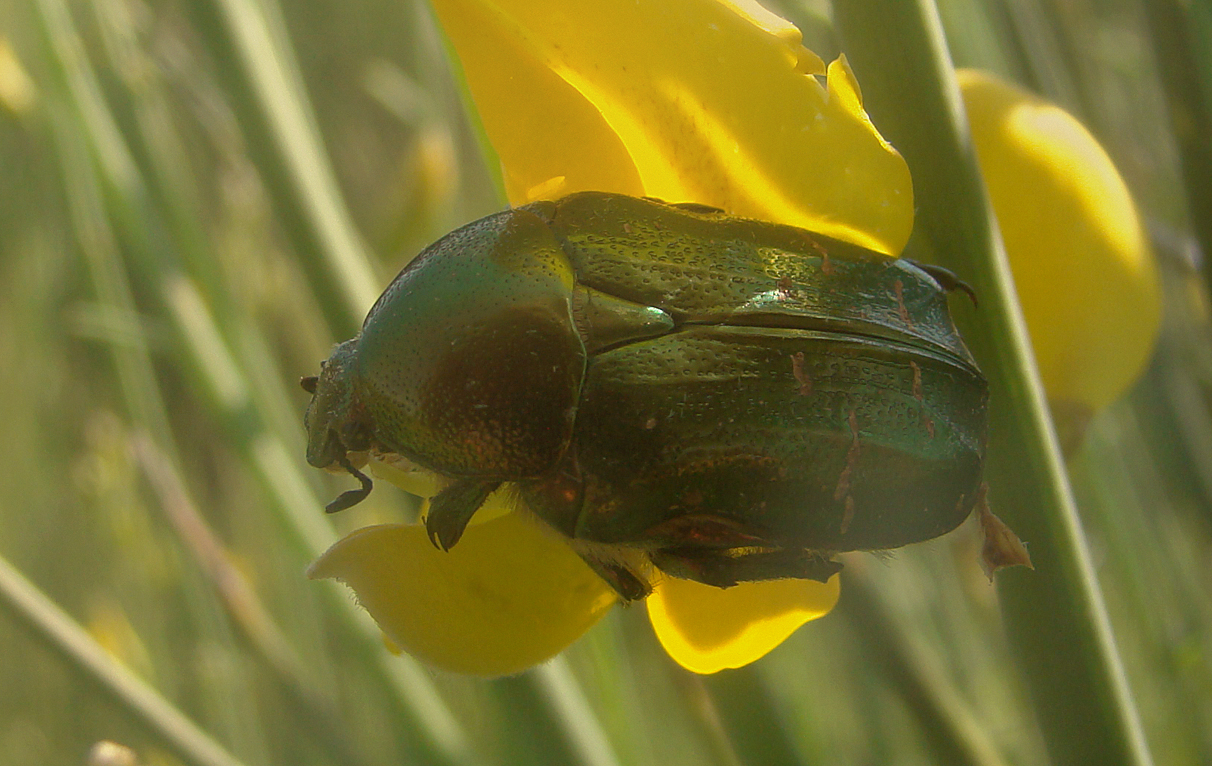
Bordering the meadows, often intertwined with blackberry shrubs, you can find the Spanish broom (Spartium junceum) shrubs. On this photograph you can see a shiny European rose chafer (Cetonia aurata) feeding on the yellow Spartium flower ... while on the following ... and closing shot ...
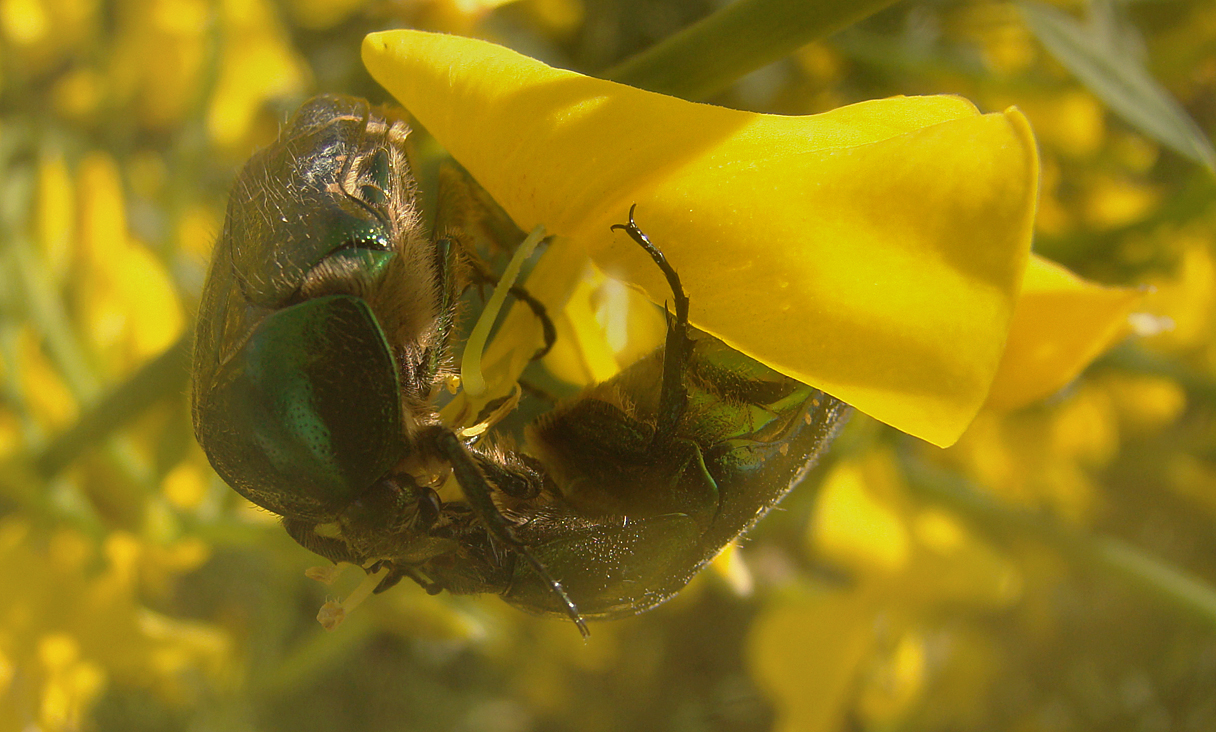
... you can observe two of those beautiful insects, feeding together on another flower, there on that shrub.
And that's it ... hope you enjoyed this walk through the warm and sunny summer day ... and hope you'll don't mind the lack of real science in this, I'm not an expert on these biological themes ... just a passionate observer of nature around me. Of course this is just a short look at the biodiversity of the Mediterranean coastal meadows, there is a lot more in my photo - archives, waiting to be published here, and even more out there waiting to be seen and photographed.
As always in these posts on HIVE, all the photographs are my work. And now ...

... with this little bonus picture ... a small beetle and some seeds ... is time to really end this post ... THE END.
This post was chosen to be voted by THEUNION.

Thanks :)
This post was shared in the Curation Collective Discord community for curators, and upvoted and reblogged by the @c-squared community account after manual review.
@c-squared runs a community witness. Please consider using one of your witness votes on us here
Thank you.
@borjan´s insects finally where they belong - in the Hive :))
Spectacular shots as always ;)
@tipu curate
Thanks :) he,he good observation about insects and the Hive .... the ideal home for insect photography ... Steemit was ok, but here on Hive :D sounds like insects are the absolute priority judging by the name.
Upvoted 👌 (Mana: 0/28)
Thank you.
If you appreciate the work we are doing, then consider supporting our witness @stem.witness. Additional witness support to the curie witness would be appreciated as well.
For additional information please join us on the SteemSTEM discord and to get to know the rest of the community!
Please consider using the stem.openhive.network app and including @steemstem as a beneficiary of this post. This could yield a stronger support.
Thank you
Amazing pictures! Thank you for sharing.
Thanks for commenting :) always glad to see some action and engagement in the comment section.
Impresionantes las fotos, con esa calidad de detalle fácil me busco el manual y clasificaría cada uno con su nombre científico. ¿con que cámara fotografíca lograste esas imágenes?
Most of the images are made with the Canon PowerShot SX60 HS, with the small conversion filter called DCR-250 Super Macro conversion lens with snap-on universal mount.
A few images, the big Caterpillar, ad example ... were made with the DSLR camera, old Canon EOS 350D and the 100 mm macro / portrait lens + the external macro ring - lite flash.

Some, technically lower quality photographs ...
... like this one ad example, were made without any macro equipment, with the small compact camera that is now completely broken and I don't even remember the model ... I think it was some small Olympus.